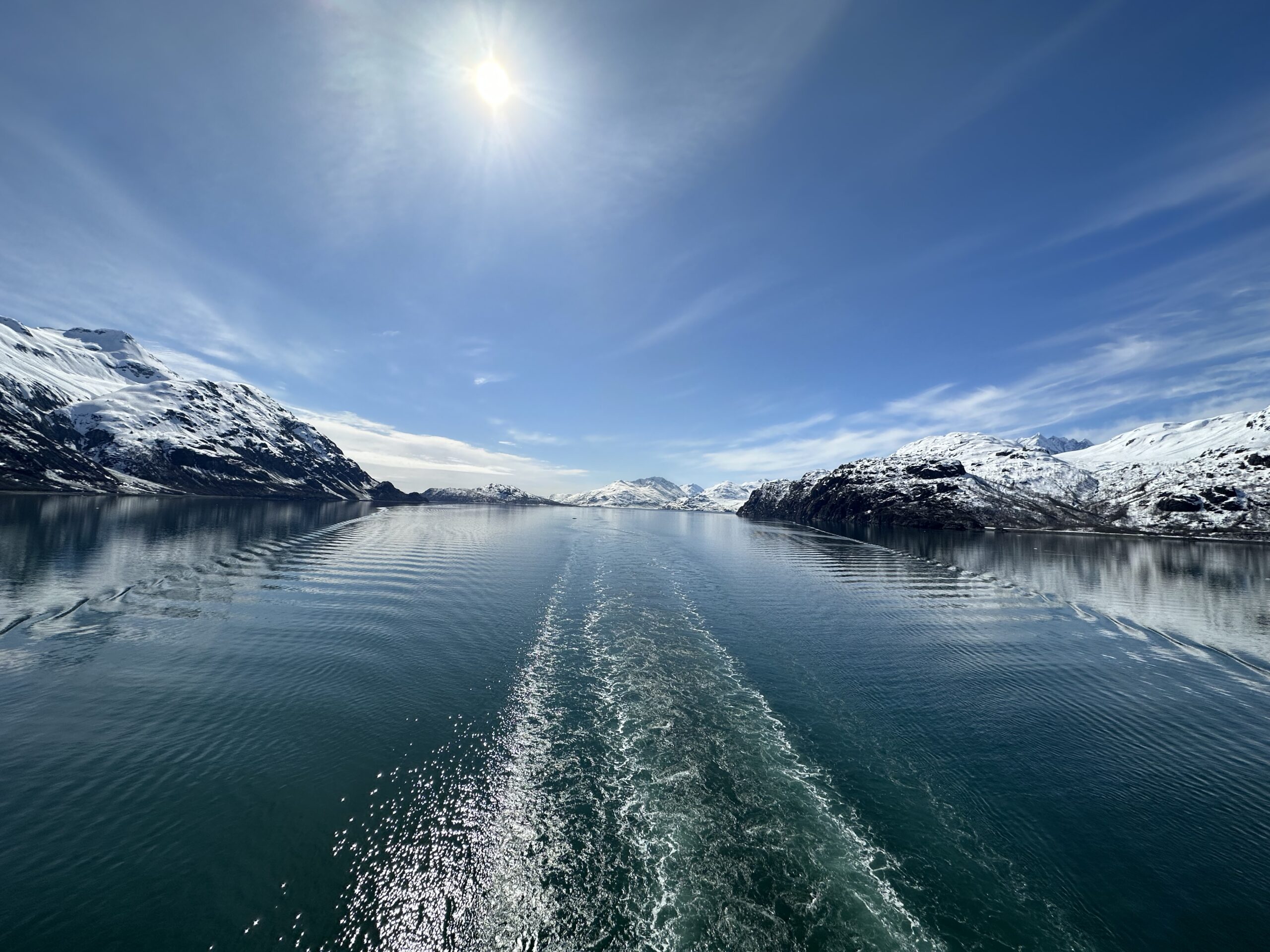Glacier Bay National Park is a must-see destination when traveling in or near the Inside Passage of Alaska. Check out these interesting facts about the creation of the national park. Learn about its importance to mankind, and the environmental protections that keep it in a pristine natural state so we can all enjoy it for generations to come.
This blog post contains affiliate links. If you make a purchase using one of these links, I may receive compensation at no extra cost to you. Read my disclaimer for more information.
Who Designated This Massive Area a National Park?
The combination of hard work from conservationists and the renowned naturalist John Muir brought prominence to the region. Glacier Bay National Park consists of more than 25 million acres of glaciers, forests, and waterways.
First Designated a National Monument
The scientific value of the area, along with its natural beauty, earned the designation of national monument in 1925. President Calvin Coolidge received the honor, but it was actually the US Congress that made the formal designation.
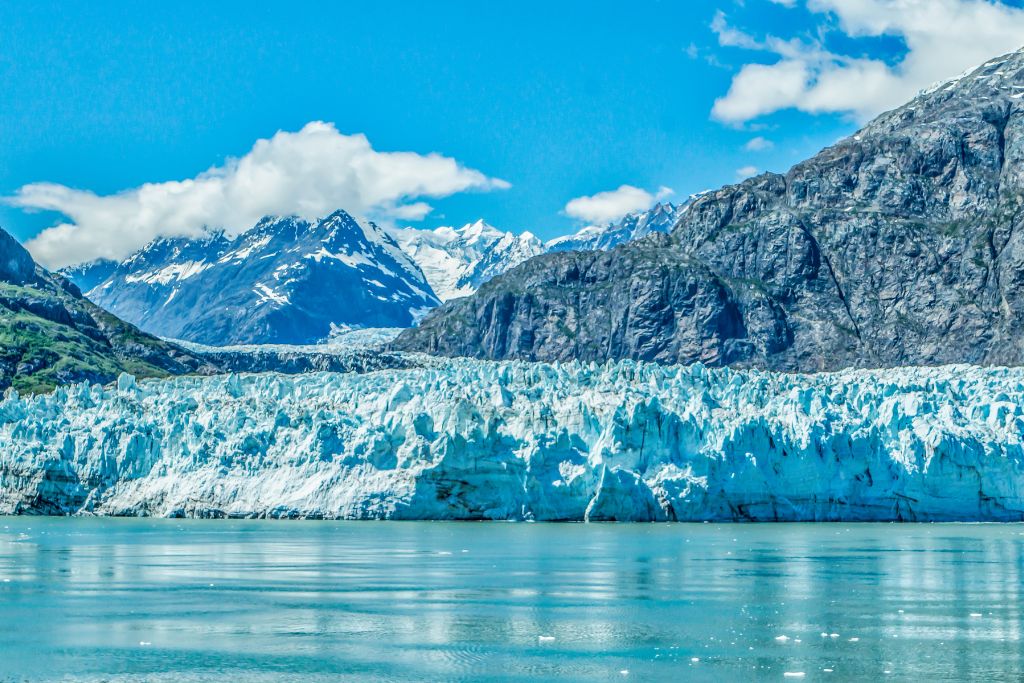
Glacier Bay Finally Becomes a National Park
In the 1980s, an effort to protect vast areas of the Alaskan wilderness raised the bar for Glacier Bay. The Alaska National Interest Lands Conservation Act (ANILCA) passed through Congress and President Jimmy Carter signed it into law. This act expanded the protected area and officially designated Glacier Bay as a national park and preserve. Protecting the land and declaring it a national park recognized the importance of the natural habitats for wildlife, scientific research, and public enjoyment.
Where is Glacier Bay?
Glacier Bay National Park and Preserve lies about 60 miles west of Juneau, Alaska. It can only be reached by plane or boat. The single road in the area connects the town of Gustavus and its airfield to park headquarters at Bartlett Cove.
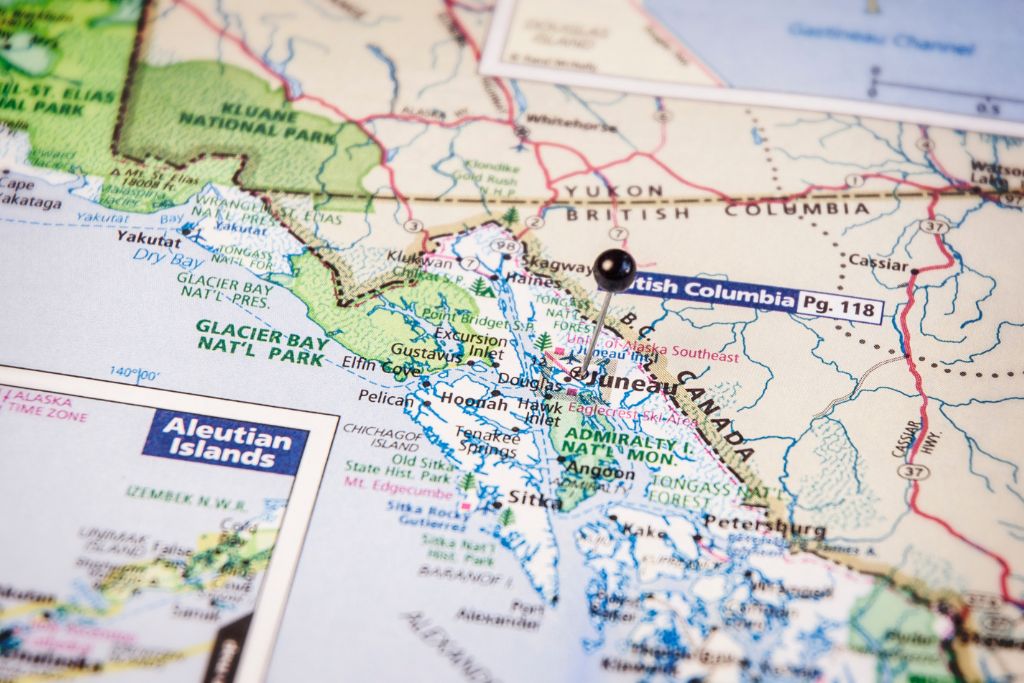
Glacier Bay is a part of the Inside Passage. The Inside Passage, located on the Pacific Northwest coast of North America, consists of 1000s of islands, inlets, and bays. Traveling through here on a ship allows you to get up close to glaciers and the wilderness protecting these special lands.
How to Get to Glacier Bay National Park
Visiting Glacier Bay is a remarkable once-in-a-lifetime experience. It’s a remote area, so there are no roads that lead directly to the park. Instead, people usually fly or take a boat to get there. Here are several great ways to reach Glacier Bay National Park..
By Air
✈️ The most common way to reach Glacier Bay National Park is by flying into Gustavus, the gateway community. You can catch a flight from Juneau, Alaska’s capital city, with plenty of connections to other major cities in the U.S.
You can find convenient air connections from Juneau, Skagway, or Haines via daily commuter air taxi services. Juneau is easily accessible from Seattle and Anchorage. From Gustavus, you can take a short drive or a shuttle to the park.
By Sea (Including a Cruise Ship)
🛳️ Another popular way to experience Glacier Bay National Park is by taking a cruise. Many cruises in Southeast Alaska include a day of cruising in Glacier Bay, offering breathtaking views of the glaciers and wildlife. You can also take a ferry from Juneau to Gustavus via the Alaska Marine Highway System.
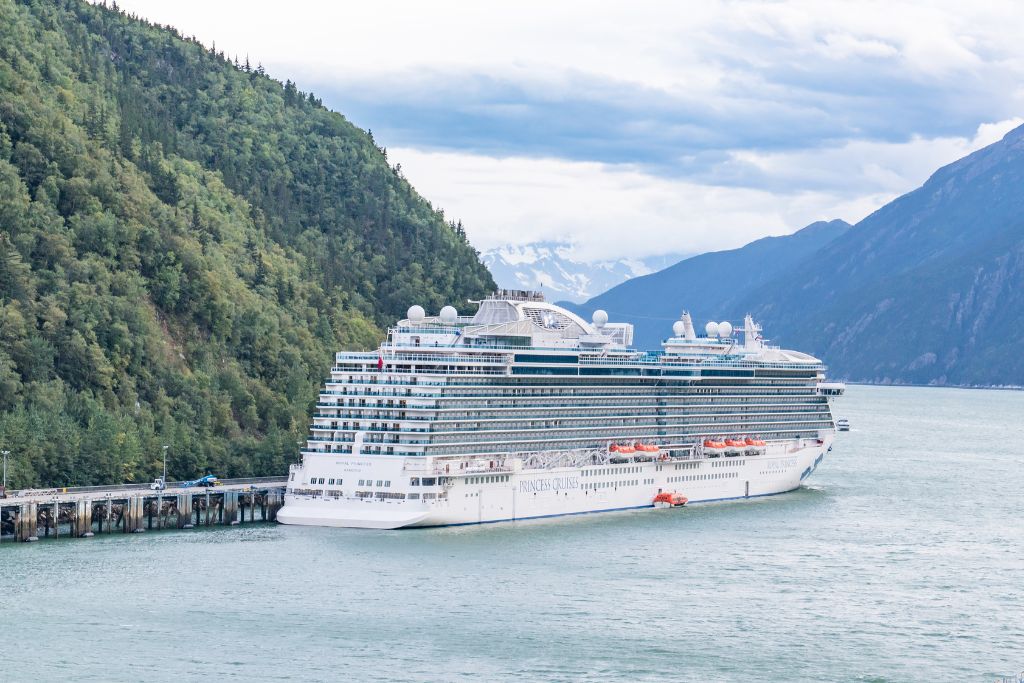
On a Tour Boat
⛴️ If you’re already in the area, you can take a day tour boat from Bartlett Cove, located within the park. These tours offer an up-close view of the glaciers and a chance to spot wildlife such as whales, seals, otters, and bears. Click here to check out available tours on the date you visit.
By Kayak
🛶 For the more adventurous travelers, kayaking is a great way to explore the park’s coastline and get a unique perspective of the glaciers. You can rent kayaks in Gustavus or Bartlett Cove and even join guided kayak tours. Just remember, however far you paddle out is the same distance you must return.
On a Charter Boat
🚤 You can also hire a charter boat from nearby towns like Juneau or Sitka for a personalized tour of Glacier Bay and its surrounding areas.
Remember, there are no roads directly to Glacier Bay National Park, so air and sea are your main options. Whichever way you choose to reach this magnificent park, you’re in for a treat with its stunning landscapes and diverse wildlife.
Who is Responsible for Taking Care of Glacier Bay National Park?
The state of Alaska and the National Park Service share the management of Glacier Bay National Park. The National Park Service is responsible for preserving the natural and cultural resources of the park for the enjoyment, education, and inspiration of current and future generations. They oversee activities such as wildlife management, conservation efforts, and visitor services to ensure that Glacier Bay remains a pristine and beautiful place for people to experience. Everyone takes the protection of this unique area very seriously.
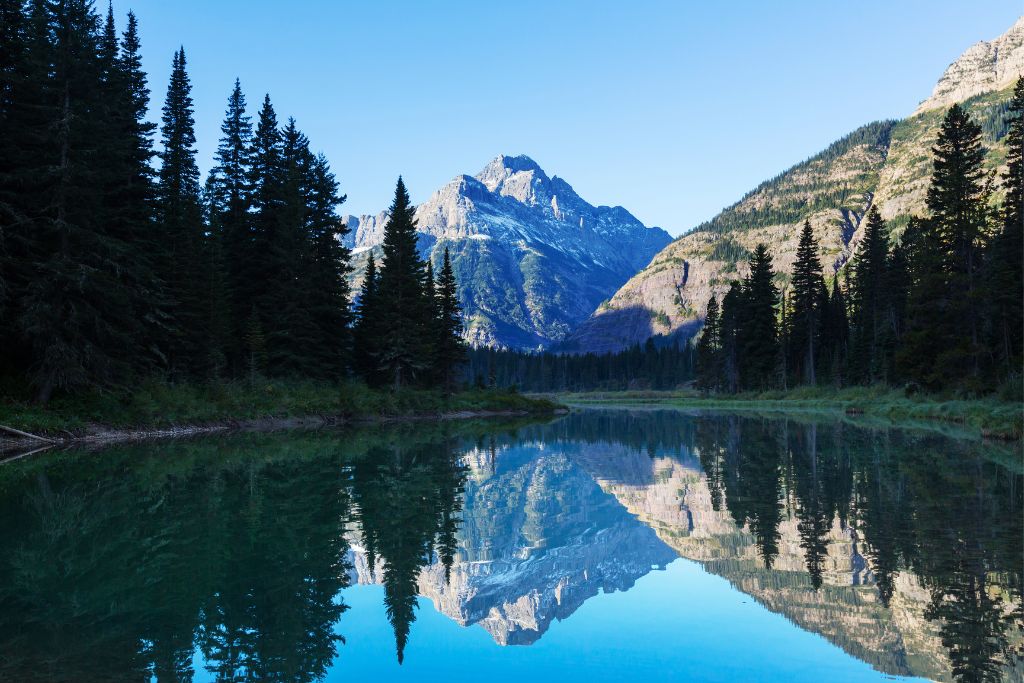
We spoke to several park rangers and heard others give a lecture while on the cruise. They are committed and passionate about this land. You can learn so much by listening to them and understand their love of the land through their words.
What Are the Environmental Protections in Glacier Bay?
The National Park covers approximately 2.7 million acres protected under the 1964 Wilderness Act. Keeping the land and sea as pure as possible gives the highest level of protection to the national park. Within the park’s designated borders are no buildings, development, or other permanent evidence of people.
The constant battle for dedicated park rangers is to protect the land while still allowing people to safely and respectfully experience the magnificent setting. They do their best to keep Glacier Bay as pristine as possible, and nobody is allowed to alter that condition.
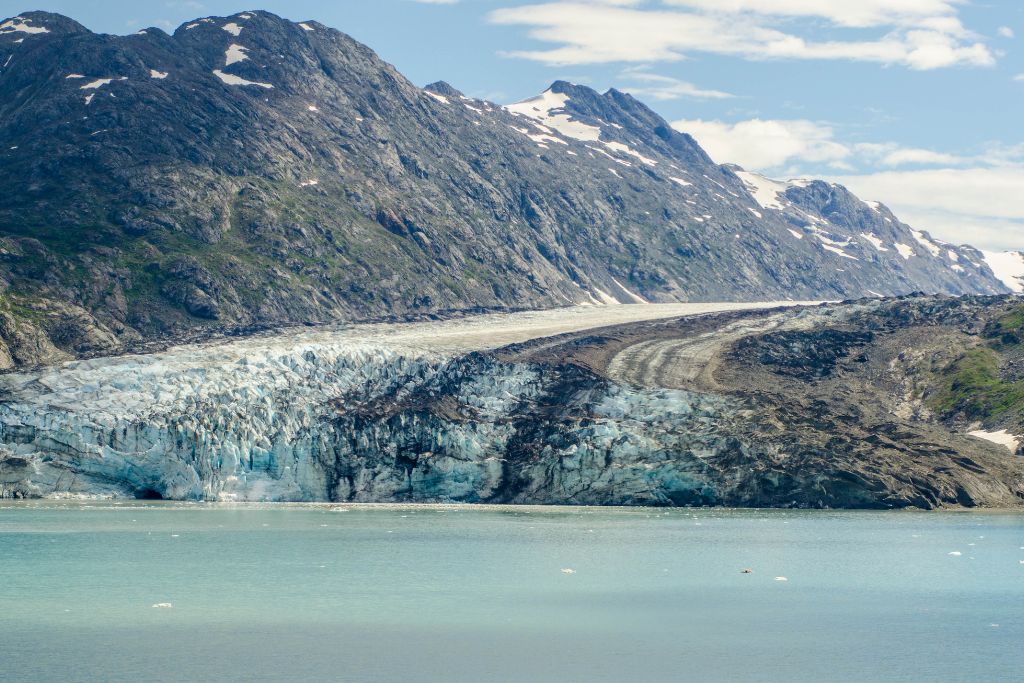
All water vessels, from mighty cruise ships down to a single kayak, must have a permit to enter the bay. This is the way the park rangers can monitor and control the flow of people into the area, and also keep the potential dangers out of the national park.
The following environmental protections preserve the natural beauty and ecosystem of Glacier Bay.
Regulated Vessel Traffic into Glacier Bay National Park
Regulations limit the number of cruise ships and tour boats to minimize their impact on the environment and wildlife. This helps reduce noise, air, and water pollution. Certain areas of the park may be off-limits to boats at certain times of the year to protect sensitive habitats or during critical wildlife breeding seasons.
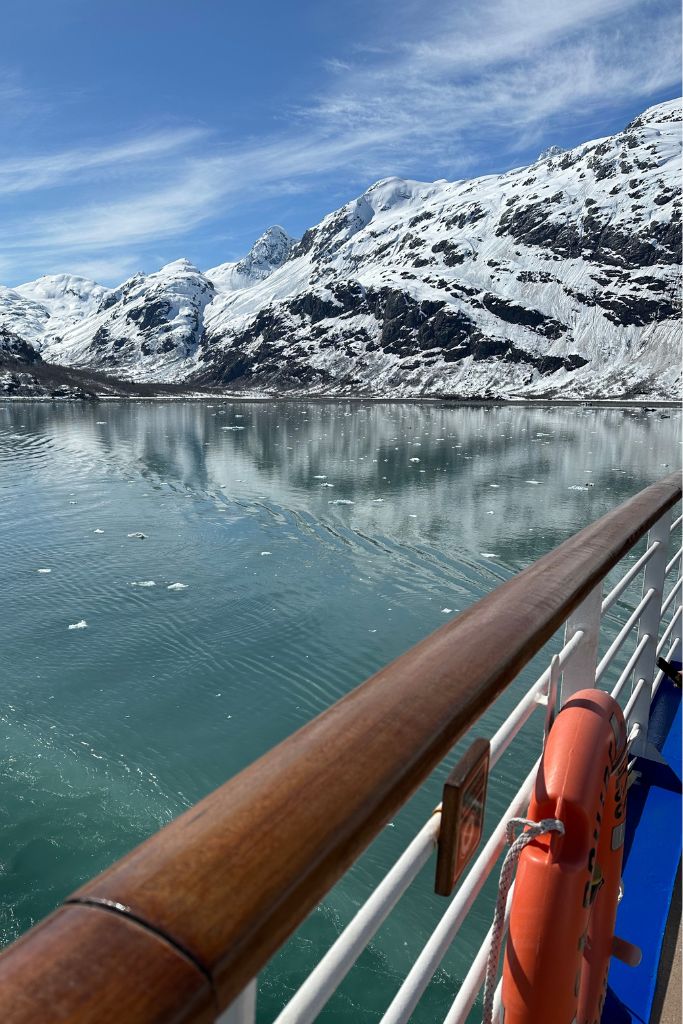
The number of cruise ships allowed to enter Glacier Bay National Park each day is limited to protect the park’s natural environment and wildlife. As of my last update, the National Park Service permits a maximum of two large cruise ships per day during the peak season, which typically runs from late spring to early fall.
Additionally, a limited number of smaller cruise vessels and tour boats are allowed entry. These restrictions help minimize the impact of tourism on the park’s ecosystems and ensure a more sustainable visitor experience.
Speed Restrictions
Vessels are required to follow specific routes and maintain certain speeds to reduce the risk of disturbing wildlife, especially marine mammals like whales.
The suggested speed limit for cruise ships and other vessels in the park is typically 13 knots (about 15 miles per hour) or less. However, in specific areas where whales are known to congregate or during certain times of the year, the speed limit may be further reduced to 10 knots (about 11.5 miles per hour) or even less. These speed restrictions help reduce the risk of ship strikes and disturbance to marine mammals, ensuring a safer environment for both wildlife and visitors.
Fishing Regulations
Fishing in Glacier Bay is strictly regulated to ensure the sustainability of fish populations. Certain areas are designated as no-fishing zones to protect sensitive habitats. Other areas are catch-and-release only and there are size and bag limits for certain species. The rules are all clearly outlined when you receive the permit to enter the area and fish the waters.
Wildlife Disturbance Regulations
There are strict guidelines for visitors to prevent disturbances to wildlife. For example, there are rules about how close boats can get to marine animals like whales and seals. Specific rules dictate how close boats can approach whales (usually at least 100 yards) to prevent harassment and stress.

For those hiking, or participating in other activities on the land, you are required to keep a safe distance from all wildlife, including marine mammals, birds, and bears. Make noise while hiking to avoid surprising bears and to store food properly to prevent attracting wildlife.
Feeding the Animals
Absolutely do not feed any wildlife!
Scientists believe the creatures in the sea and on land could possibly become dependent on this unnatural food source. The purpose of the park reserve is keeping the area as pure as possible. Feeding of the animals is not allowed which could upset the delicate balance of their ecosystem. We definitely should feel privileged that we are even allowed to intrude into this unique environment.
Research and Monitoring
The National Park Service conducts ongoing research and monitoring of the park’s ecosystems to understand their health and the impacts of climate change. This helps inform conservation strategies. Climate monitoring stations are in place to record temperature, precipitation, and other data to understand the impacts of climate change on the park.
Waste Management
There are regulations for waste disposal to prevent pollution. Visitors are encouraged to practice “Leave No Trace” principles to minimize their impact on the environment.
Boats are required to have proper waste containment systems, and discharging waste into park waters is strictly prohibited. Recycling and composting facilities are available in some areas to reduce the amount of waste sent to landfills.
While traveling through Glacier Bay, the use of styrofoam, plastic, or paper is prohibited from being brought out on deck. This is another way to protect the wildlife from possible trash blowing overboard. We were reminded of this while out on the deck of the Sapphire Princess as we cruised through Glacier Bay National Park waters. No food, cups, or wrappers allowed out on deck while cruising through Glacier Bay.
Glacier Bay National Park Visitor Education
The park provides educational programs and materials to visitors about the importance of conservation and how to minimize their environmental impact while in the park. Interpretive signs and exhibits placed throughout the park provide information about the local ecosystem and conservation efforts.
Park rangers offer talks and presentations on various topics, including wildlife safety, responsible recreation, and the impacts of climate change. They were available on our cruise ship and were so informative and passionate about Glacier Bay.
Arriving in Glacier Bay National Park on a Cruise Ship
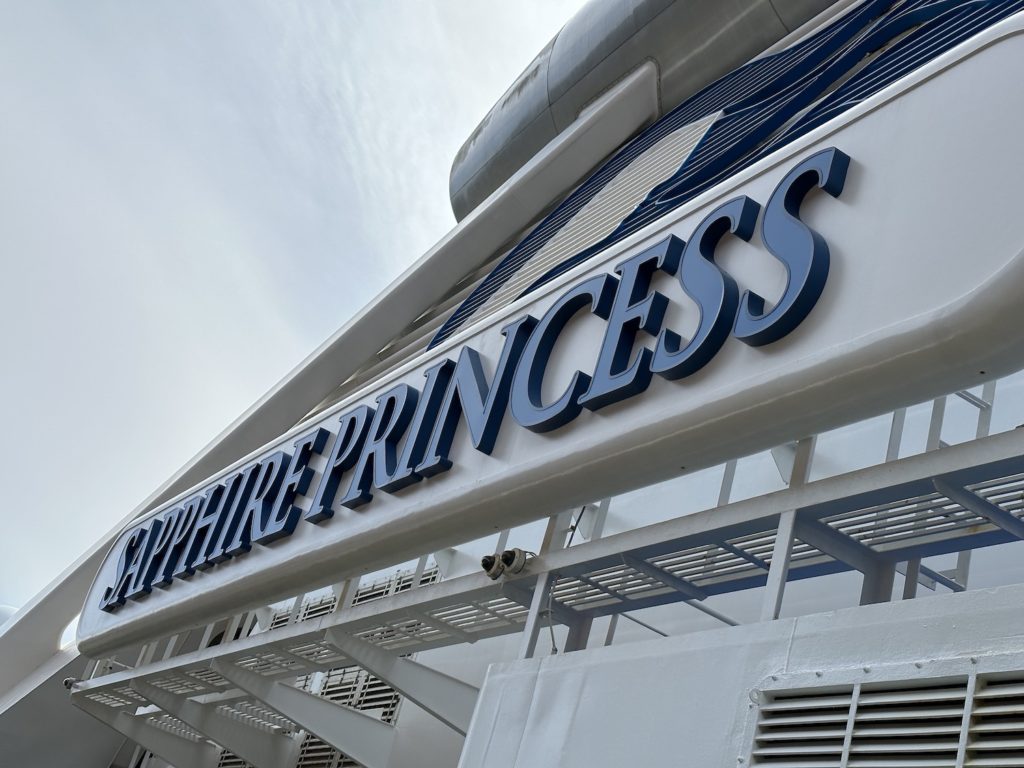
Arriving in Glacier Bay is an experience in itself. Even though this was the Sapphire Princess cruise ship with about 2500 passengers on it, everything seemed hushed and quiet when we reached Glacier Bay. A warm and heavy blanket felt like it was draped over the entire ship. It was as if everyone felt the awe-inspiring beauty all around us and spoke and moved more quietly, more slowly, especially out on deck. Nobody wanted to disturb the peaceful calm we felt on the water and all around us.
The water glowed a turquoise color and brought to mind warmer Caribbean waters. It was definitely freezing cold water with chunks of floating icebergs bobbing about, yet the sun was shining and the views were breathtaking. Sounds seemed muffled and the slower speed of the ship created a serene setting that is hard to describe. You must experience this for yourself.
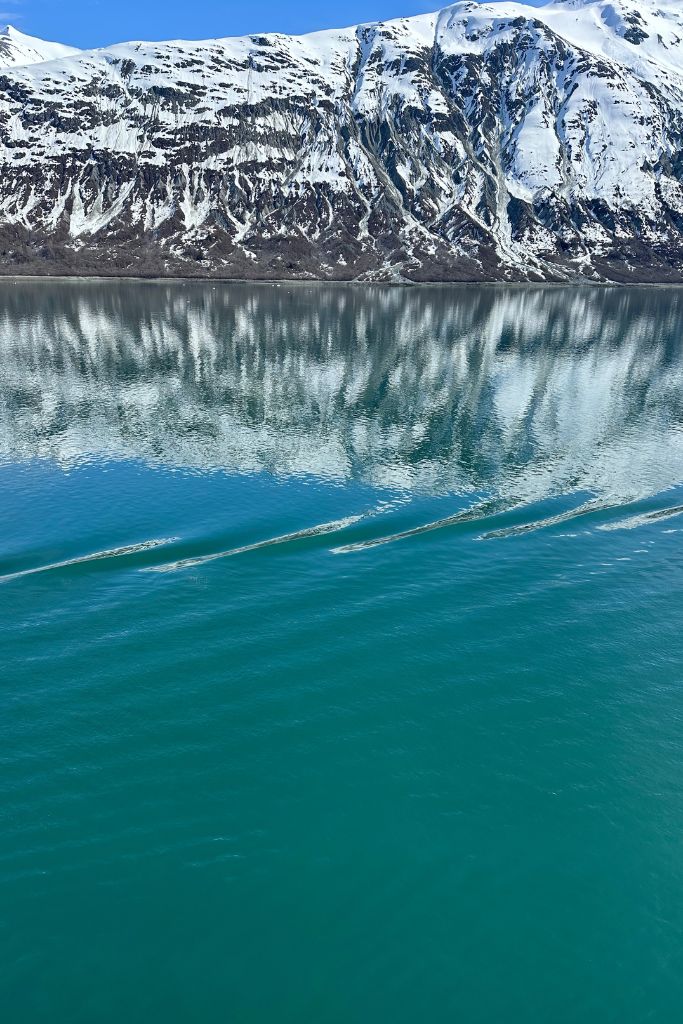
Once we were well into Glacier Bay National Park, I stood at the back of the ship staring at the turquoise waters hoping to spot a whale, or even some dolphins. I didn’t see either of these inhabitants. But I did see otters.
Becoming an “Ottah Spottah” in Glacier Bay National Park
There was a gentleman standing next to me with an expensive camera with a telephoto lens. He was capturing photos of these playful otters as they floated on their backs in the wake of the Sapphire Princess. He had difficulty locating the otters and then getting his camera into the best position as quickly as possible. So I became his Otter Spotter.
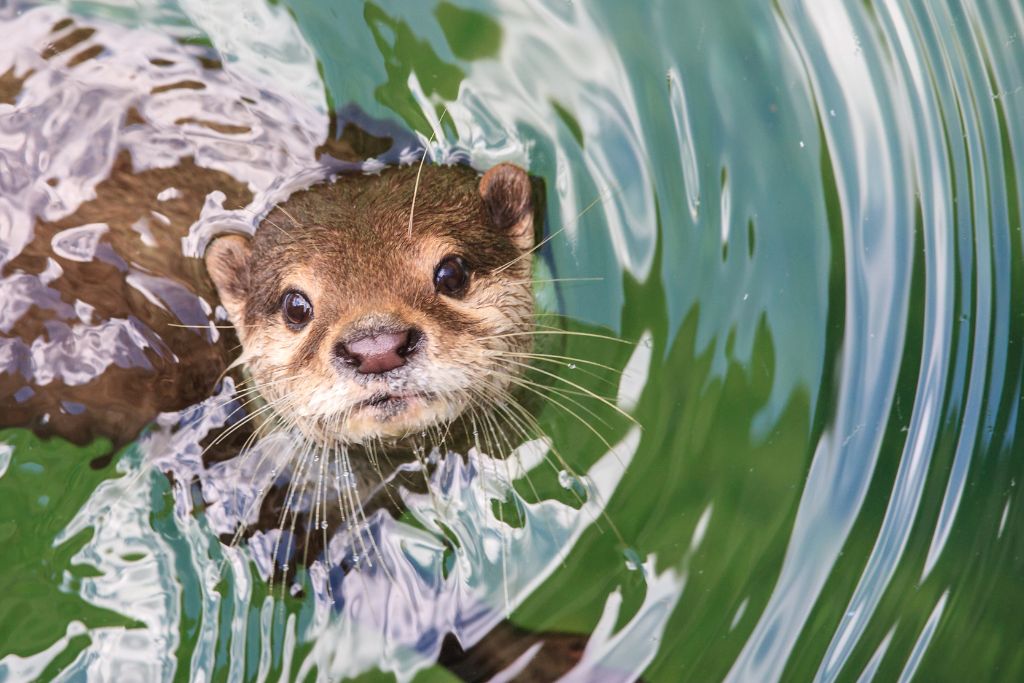
He appointed me with this honorary job because I seemed to have no problem spotting them in the water. And he loved my Rhode Island accent which turned “otter” into “ottah” as I happily told him where to point his camera. I think I was the best Ottah Spottah on the deck!
Park Rangers On Board the Sapphire Princess
The ship I was sailing on was the Sapphire Princess. They arranged for park rangers to board the ship and spend time walking on the decks to speak with interested passengers. Several of them spoke to small groups of people and answered questions or pointed out natural features on shore. The rangers shared facts or told stories about specific animals when we saw one. If a calving happened, they explained the process in a way that was easily understood.
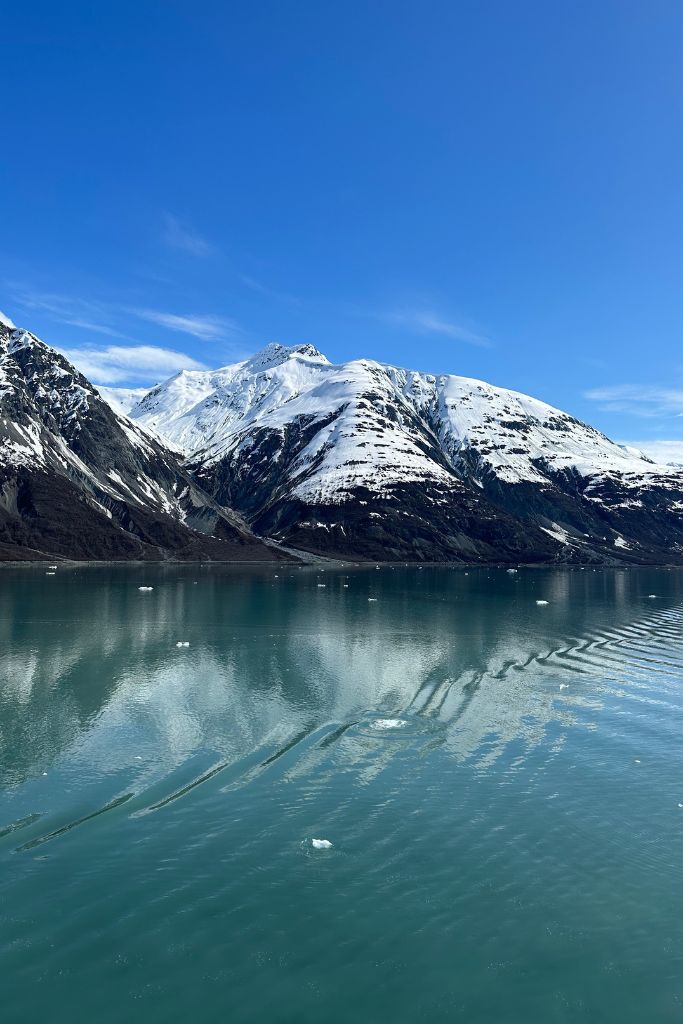
Calving is the process of a large piece of ice breaking off from the main glacier along the shore. This usually happens because the piece is unstable. The chunk that breaks off can be a chunk of ice or an actual iceberg. A calving did happen while we were on deck, but I didn’t get my camera out fast enough. Our calving experience was just a smallish chunk of ice. Watching a huge chunk, or an iceberg, must be awesome.
This was my personal experience on the Sapphire Princess. Each cruise line allowed to access Glacier Bay National Park will have their own programs to help educate and protect this natural treasure. Check online for more details or ask your favorite travel agent.
Gustavus’ Role for Glacier Bay
Gustavus is a small, charming town located near the entrance to Glacier Bay National Park in Southeast Alaska. It serves as the primary gateway for visitors to the park, playing a crucial role in the region’s tourism industry.
Gustavus is the main access point for travelers heading to Glacier Bay National Park. Visitors typically fly into Gustavus Airport or arrive by ferry from Juneau, and then take a short drive or shuttle to the park.
Accommodations and Services in Gustavus
The town offers a range of accommodations, including hotels, lodges, bed and breakfasts, and campgrounds, catering to the needs of visitors to the park. There are also dining options, grocery stores, and other essential services available.
Besides serving as a base for exploring Glacier Bay, Gustavus offers its own outdoor adventures, such as fishing, kayaking, hiking, and wildlife viewing. The area has beautiful meadows, scenic beaches, and abundant wildlife.
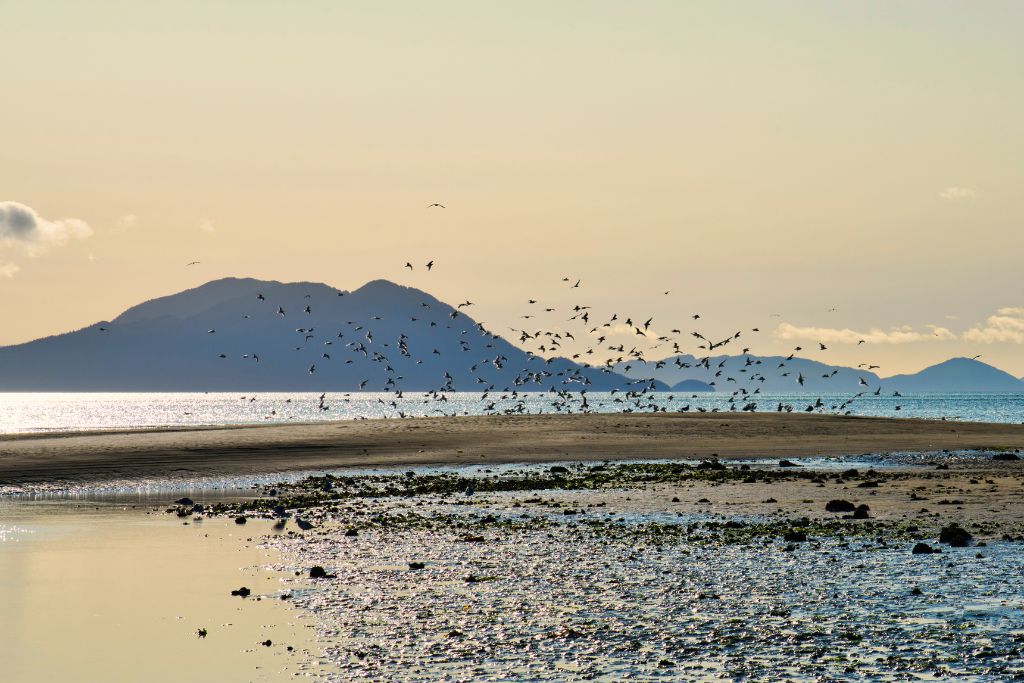
Community and Conservation
Gustavus has a small, close-knit community that values sustainability and conservation. The town hosts various events and activities throughout the year, providing visitors with a glimpse into local life and culture.
Residents and businesses of Gustavus are closely connected to the national park. They get involved with efforts to preserve the natural beauty and ecological integrity of the region. It’s only natural for them to support conservation initiatives and sustainable tourism practices.
Overall, Gustavus plays a vital role in welcoming and accommodating visitors to Glacier Bay National Park. It also offers its own unique Alaskan experiences and contributes to the conservation of the area’s natural resources.
In Conclusion: Glacier Bay National Park
The opportunity to visit and explore the land or waters of Glacier Bay National Park is a privilege. If you get the chance, then definitely take it. I may be biased as a travel agent booking cruises. but traveling through the Inside Passage was amazing. Glacier Bay was the absolute high point of our Alaskan adventure. If you’d like to read more about an Alaskan cruise, or even a land-based trip, check out these Alaskan posts.
Read More About Alaskan Cruise Destinations
21 Unique Things to Do in Icy Strait Point Alaska
13 Amazing Things to Do in Sitka Alaska in Just One Day
21 Fun Things to Do in Skagway Alaska
Visit Creek Street in Ketchikan
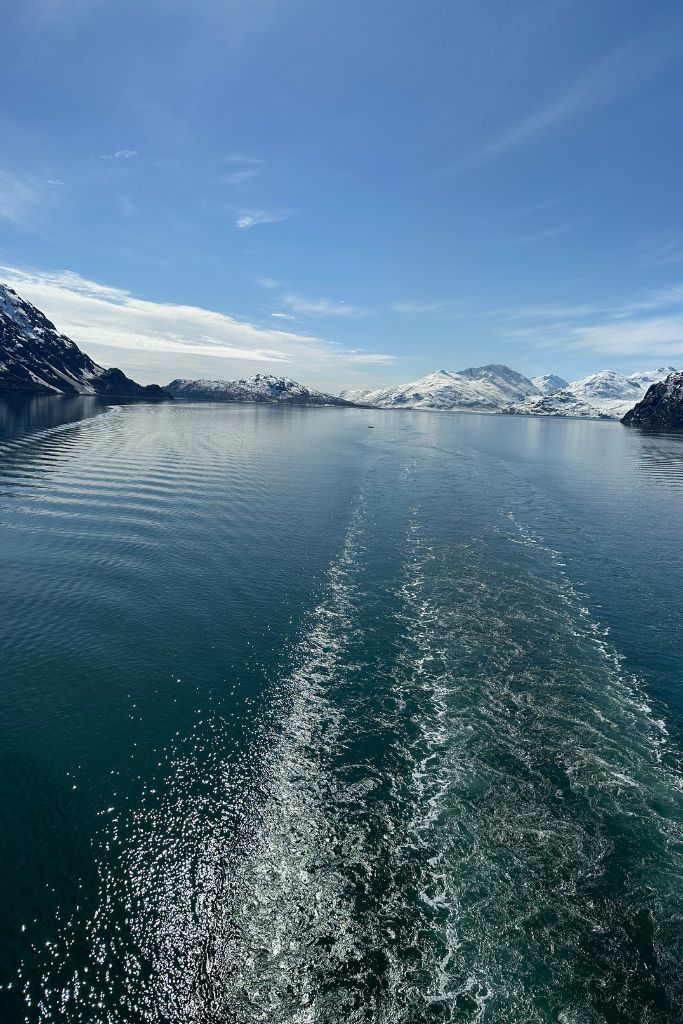
The dedication and effort put into keeping this area protected makes exploring Glacier Bay National Park well worth your time. Experience the majestic beauty of this national park for yourself.










